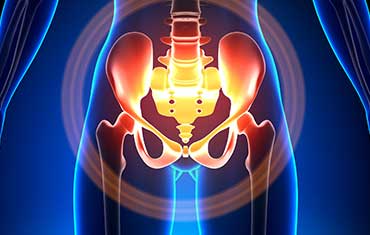PELVIC PAIN

Pelvic pain, discomfort felt in the lower abdomen or pelvis, can have various causes and ranges from mild to severe. Understanding the potential triggers and symptoms of pelvic pain is essential for effective management and relief.
One common cause of pelvic pain is menstrual cramps, experienced by many women during menstruation. These cramps occur as the uterus contracts to shed its lining, resulting in pain and discomfort in the lower abdomen. Endometriosis, a condition where tissue similar to the uterine lining grows outside the uterus, can also cause pelvic pain, particularly during menstruation or intercourse.
Pelvic inflammatory disease (PID) is another potential cause of pelvic pain, often resulting from sexually transmitted infections (STIs) like chlamydia or gonorrhea. PID causes inflammation of the reproductive organs, leading to symptoms like pelvic pain, abnormal vaginal discharge, and fever. Urinary tract infections (UTIs) or bladder infections can also cause pelvic pain, along with symptoms like frequent urination, burning sensation during urination, and cloudy urine.
In some cases, pelvic pain may be related to gastrointestinal issues such as irritable bowel syndrome (IBS), constipation, or inflammatory bowel disease (IBD). These conditions can cause abdominal pain and discomfort that radiates to the pelvic area. Additionally, pelvic pain can be a symptom of more serious conditions such as ovarian cysts, fibroids, or pelvic organ prolapse.
Seeking medical evaluation is essential for diagnosing the underlying cause of pelvic pain and determining the most appropriate treatment plan. Treatment may include medication, physical therapy, hormone therapy, or, in severe cases, surgical intervention. By addressing the root cause of pelvic pain, individuals can alleviate discomfort and improve their overall quality of life.
